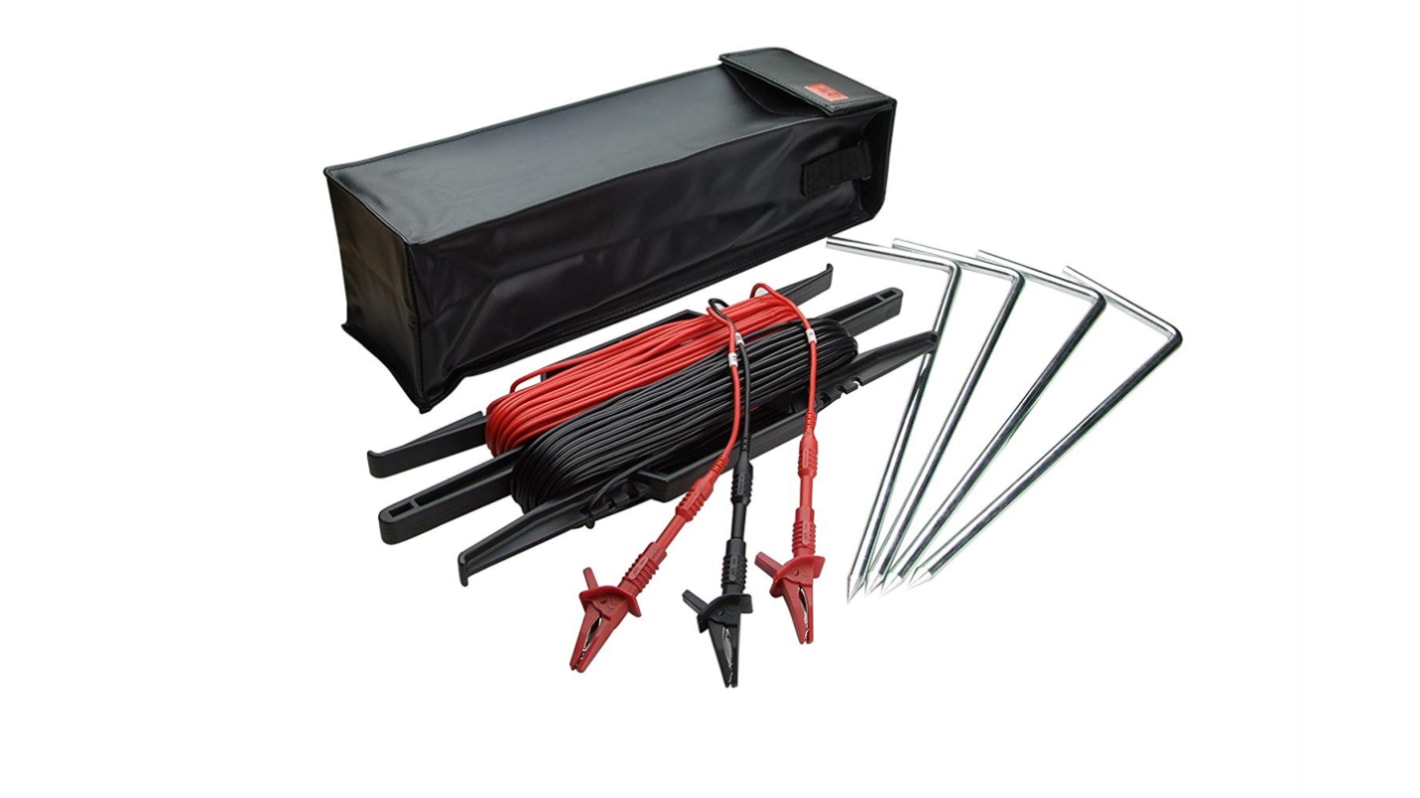Megger Earth & Ground Resistance Tester Kit, For Use With DET5/4
- RS Stock No.:
- 204-612
- Mfr. Part No.:
- 6210-161
- Brand:
- Megger
Discontinued product
- RS Stock No.:
- 204-612
- Mfr. Part No.:
- 6210-161
- Brand:
- Megger
RoHS Status: Not Applicable
- COO (Country of Origin):
- GB
Megger Earth Tester Field Kit
For use with the DET5/4 series, this kit provides all the essentials for 3 to 4-pole earth and ground testing. All neatly encompassed in its own tool bag, making it fully portable for engineers and users who test in multiple locations or sites. Featuring robust spikes made from galvanised steel to prevent corrosion, a cable winder is also included to help preserve cable life and prevent tangles.
Features and Benefits:
• Tool bag
• 2.5lb hammer
• 4 galvanised steel spikes
• 30m and 50m of cable on a cable winder
• 3m leads with connector clips
• 2.5lb hammer
• 4 galvanised steel spikes
• 30m and 50m of cable on a cable winder
• 3m leads with connector clips
How do earth and ground testers work?
A ground or earth is a conducting connection, usually between an electrical circuit and the earth. Earth grounding is a connection from a circuit conductor, usually the neutral, to a ground electrode or plate placed in the earth. Equipment grounding ensures that operating equipment or a circuit is grounded properly. This prevents differences in voltage potential from a possible flash-over from things such as lightning strikes by ensuring the current finds a safe path to the earth.
A ground resistance tester is able to take resistance measurements using several test methods, selective testing, stake-less testing, 2-pole testing and 3-4-pole testing. They are able to test the resistance between the earth plate or earth electrode and surrounding ground. In pole testing probes are entered in to the ground and a reading is taken at each location. Readings are then plotted against the distances, the point where the resistance drops is the approximate resistance of the grounding. This is called the fall of potential method and is highly reliable.
A ground resistance tester is able to take resistance measurements using several test methods, selective testing, stake-less testing, 2-pole testing and 3-4-pole testing. They are able to test the resistance between the earth plate or earth electrode and surrounding ground. In pole testing probes are entered in to the ground and a reading is taken at each location. Readings are then plotted against the distances, the point where the resistance drops is the approximate resistance of the grounding. This is called the fall of potential method and is highly reliable.

